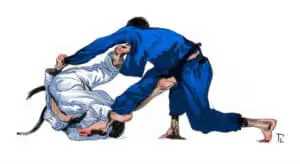Why is BJJ Bad?
BJJ is bad because it can cause long term damage to the body, it is expensive, has limited effectiveness in a self defence situation, has a strange uniform, takes a long time to learn, can be difficult to find a gym close by and is addictive.
Is BJJ Bad For The Body?
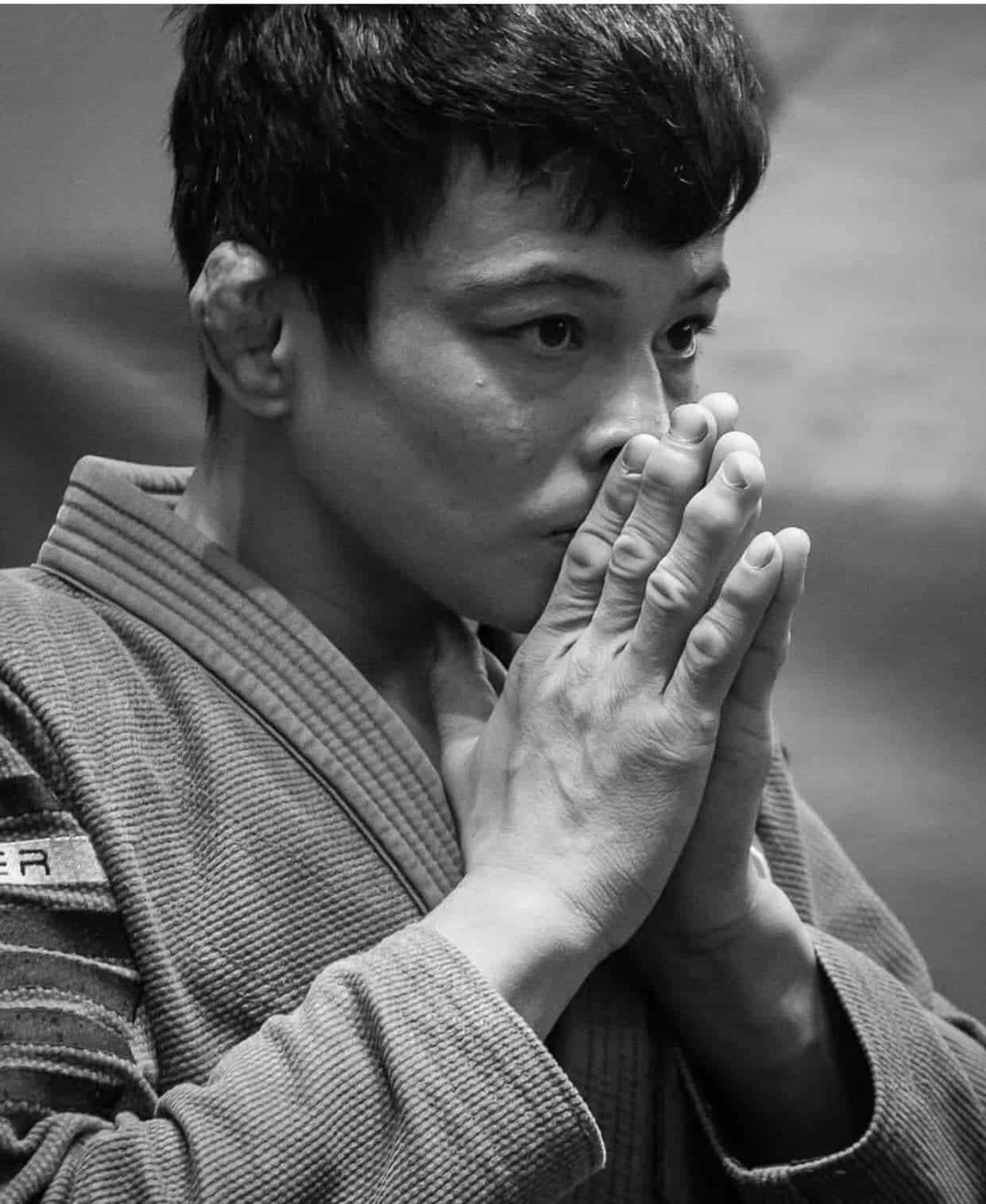
BJJ is both good and bad for the body. BJJ is a good form of exercise which can help you lose weight, increase your flexibility and strength. These are all great for your body. BJJ is also bad for the body as it can result in injuries. 85% of BJJ athletes who have trained at least 1 year have sustained an injury. BJJ is also bad for the body because it can lead to long term chronic injuries due to the pressure BJJ puts on the neck, back, feet and hands. Unfortunately herniated discs, cauliflower ear, chronic neck pain and arthritis are common in long term BJJ practitioners.
Why Is BJJ So Expensive?
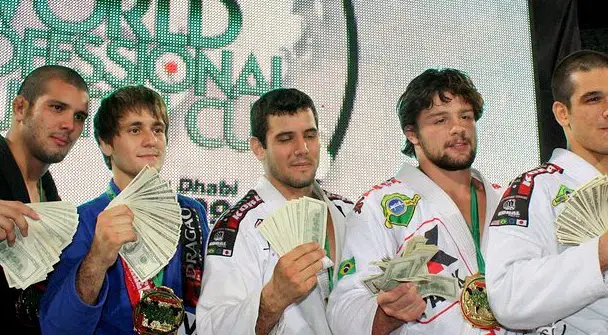
BJJ is so expensive because nearly all BJJ gyms are for profit businesses where the owners and instructors are deriving a full time income from the gym. BJJ gyms do not receive any government grants and they rely on paid employees to run the gym. BJJ gym owners have also attempted to cash in on the surging popularity of BJJ by charging the maximum amount that can be supported by the current demand.
As BJJ became increasingly popular many Brazilians moved from Brazil to America to open up gyms. The goal was to improve their lives and make as much money as possible. They saw America as their golden ticket to financial success and BJJ was going to be the vehicle they used to attain that success.
BJJ gyms cost between $100-$200 for group training classes. Private lessons start at $50 an hour and can be as high as $500 an hour for lessons from elite athletes and coaches. BJJ Gis can set you back between $70-$150 and you need at least two if you are going to be training frequently. All these expenses add up making BJJ a pretty expensive sport.
In contrast to BJJ, wrestling is a much cheaper alternative. Usually wrestling clubs are run by volunteers who coach purely for the love of the sport. Wrestling clubs will often be free or cost a nominal amount just to keep the lights on. The only expense you need to occur when training wrestling is a pair of shoes which you can find for $50-$100.
How Effective Is BJJ For Self Defence?
BJJ is effective for self defence however its effectiveness is waning due to increased sportification. BJJ has moved away from its self defence roots and now has become very sportified. This development has led to a decrease in effective self defence techniques such as takedowns and grappling with strikes and instead has led to an increase in ineffective self defence techniques such as pulling guard and turtle.
BJJ is still effective for self defence. You can still see MMA fighters using BJJ to effectively control and submit their opponents. You can also watch street fight videos where BJJ athletes are able to defeat their opponents using BJJ. However the increased sportification is damaging the effectiveness of BJJ for self defence.
Why Do You Wear A Gi In BJJ?
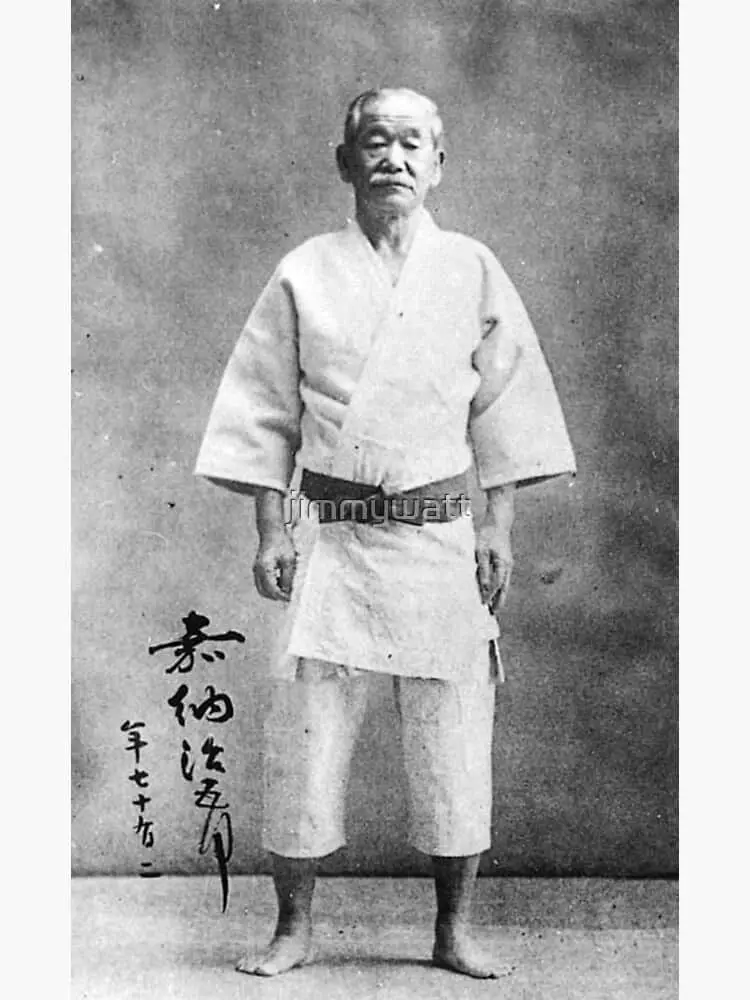
A Gi is worn in BJJ because BJJ is derived from Judo and kept the same uniform. The founder of Judo, Kano designed the Gi uniform used in Judo based on the traditional Japanese Kimono. The Gracies while learning Judo in Brazil wore this same Gi and when they decided to create BJJ they kept the original Judo uniform.
The modern Gi has been slightly altered from Kano’s original design with the sleeves and pants being lengthened but the design is mostly the same.
Do You Have To Wear A Gi In BJJ?
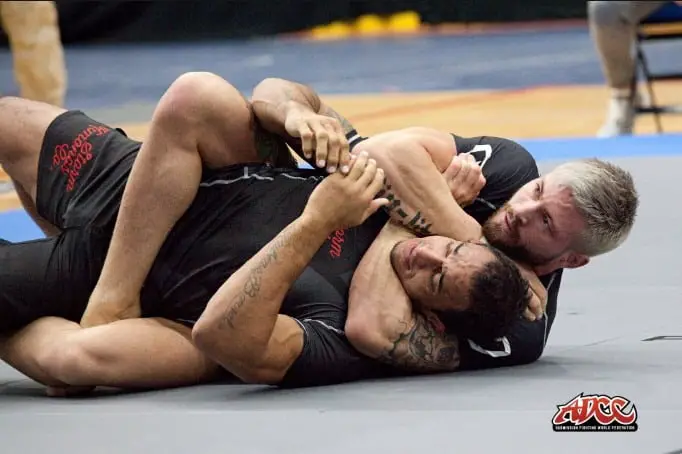
No, you do not have to wear a Gi in BJJ. There are 2 types of BJJ, Gi Jiu Jitsu and No-gi. In No-gi athletes typically wear a tight fitting t-shirt with shorts. No-gi has increased in popularity as MMA has grown. The rules of Gi Jiu Jitsu and No-gi are usually the same but often more submissions are allowed in No-gi particularly leglocks such as heelhooks.
No-gi is characterised as being faster and more explosive than Gi Jiu Jitsu with a higher focus on dynamic transitions. No-gi is better suited to MMA as athletes are not allowed to grab clothing so the grips used in No-gi and MMA grappling are the same.
Gi Jiu Jitsu is typically slower than No-gi because an athlete can establish greater control over their opponent through gripping the Gi and the friction that the Gi generates. In Gi Jiu Jitsu positions that are very dominant and stable such as mount and side control are much less so in No-gi. Some people say Gi Jiu Jitsu is more technical due to the greater possibilities for techniques that the Gi creates, however this is debatable.
Most BJJ coaches recommend you train both styles of BJJ to become a well rounded grappler. However this old advice is being challenged as more and more athletes are choosing to focus on one particular style. Craig Jones a top No-gi grappler said he thinks it is more beneficial for a No-gi athlete to train wrestling instead of Gi Jiu Jitsu. John Danaher a top coach says both styles of training are beneficial and that Gi Jiu Jitsu is great for learning how to escape positions while No-gi is great for learning how to control and submit opponents.
How Much BJJ Can You Learn In 1 To 3 Months?
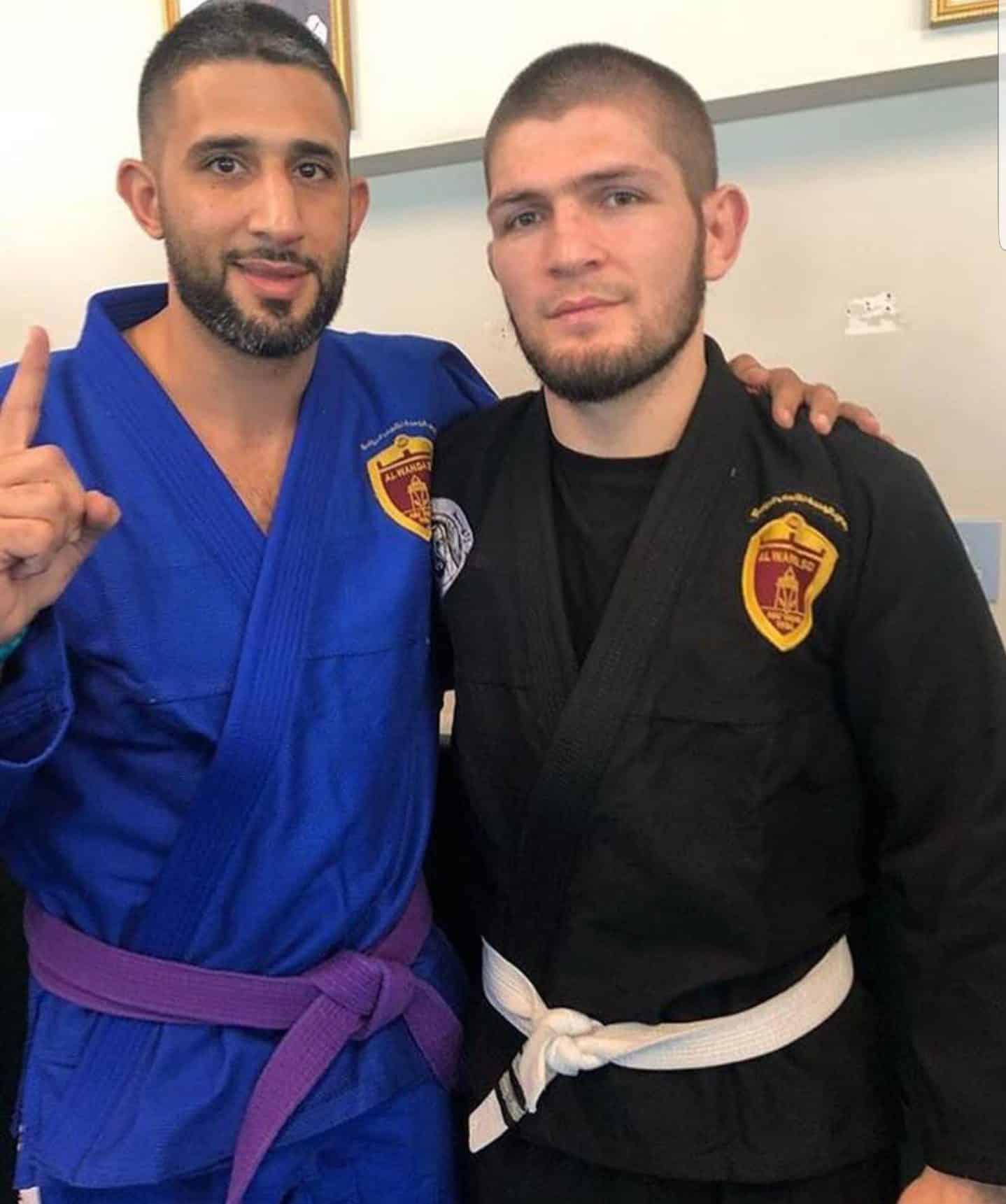
In 1 month of BJJ you can learn the rules and positions and will know a couple of techniques. You will struggle to have any success while sparring. After 3 months of learning BJJ you can have a decent grasp of the fundamentals and will know a couple of techniques in each of the of major positions. After 3 months of learning BJJ you will be able to execute some techniques on less or equally experienced resisting partners while sparring.
Trouble Finding A BJJ Gym
Even though BJJ has exploded in popularity it can still be difficult to find a gym. If you are in a major US city there will be many BJJ gyms however they still may not be close to where you live and work. Many people commute 30-60mins each way to reach their BJJ gym. For many this commute is not feasible and makes training BJJ impossible. It can also be difficult finding a BJJ gym which fits your schedule. Most gyms have classes from 6-9pm and these time slots don’t suit everyone.
Why Is BJJ Addictive?
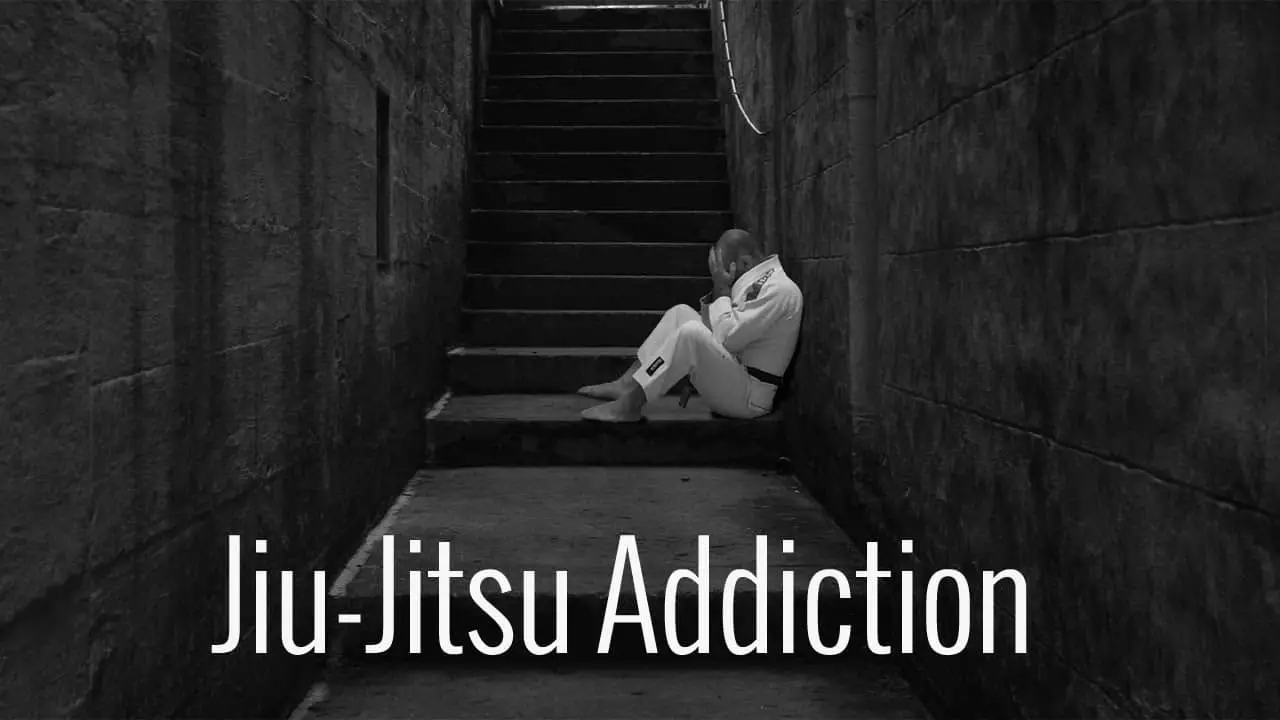
BJJ is addictive because it is challenging, fun, has an inbuilt social element and results in you receiving a hit of a dopamine when you finish training making you feel happy and relaxed.
These are all great things which can have a positive effect on your life. However people can become addicted to chasing these effects. This can result in BJJ practitioners neglecting other key areas of their life in pursuit of chasing their BJJ high.
It is common for BJJ practitioners to be in conflict with their partners over the amount of time they spend at their BJJ gyms. If the typical BJJ practitioner works a 9-5 and then after work immediately heads to their BJJ gym for a couple of hours, coming home at around 10pm. This doesn’t leave much time for your loved ones.
Becoming a BJJ addict can lead to conflict in your relationships, poor performance at work and not dedicating enough time to your family. To avoid becoming a BJJ addict ensure to strive to achieve balance between your training and the other areas of your life.
